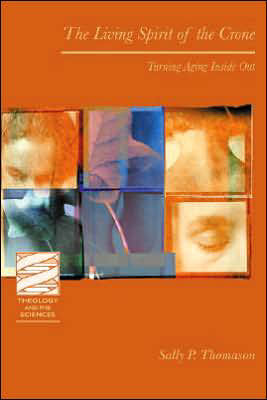
|
Posted August 18, 2006
Book: The Living Spirit of the Crone: Turning Aging Inside Out Author: Sally Palmer Thomason Fortress Press, Minneapolis, NM. 2006. Pp. 154 An Excerpt from the Jacket:
An Excerpt from the Book: A New (and Very Old) Practice of Aging From the time I was forty until my early sixties I ran three to five miles three or four times a week. I enjoyed the physical exertion, but I also loved what I came to call my enforced-moving meditation that quieted my mind and seemed to improve my emotional balance in a very busy time in my life. But the constant pounding on my feet on the pavement took its toll. My right knee became extremely painful; I could hardly walk, but I did not want an operation if I could avoid it. The orthopod presecribed some exercises, and I had to give up running. This was depressing. Not only did my knee hurt, but I could tell that generally all of my muscles were losing their strength and flexibility. And, too, I worried about my emotional stability with the loss of my “enforced meditation.” My son suggested I try yoga. I started attending weekly classes with little hope for improving my physical strength; I just wanted to ward off further stiffening and pain in my joints. It did not take long for me to realize I was gaining far more than the physical therapy for which I originally signed up. I gradually began to experience, not just to theorize about, the deep interconnections of my body, mind, and spirit. Yoga’s gifts for increasing my emotional stability, as well as refreshing my spirit, were an unanticipated lagniappe. I was fortunate that Lou Hoyt, a master teacher and delightful woman, was my instructor. Having done intensive training with B.K.S. Iyengar in India (who fifty years age introduced Yoga into the United States), as well as focused personal practice and training in the United States, Lou provided exquisitely grounded direction through firm but gentle guidance. Within the last few years, yoga has become extraordinarily popular in the United States. A rolled-up yoga mat over one’s shoulder seems to have become a middle-class status symbol. But its popularity will not negate its power if its profound message is well understood. I hope others attending the many classes throughout the land, from shopping malls to church basements, are being exposed to well-grounded instruction. Yoga can be a valuable guide for holistic aging. As a science, yoga is a body of knowledge based on observation and experimentation, systematically arranged, that illustrates attributes needed for successful aging — awareness, discipline, and continued learning. Our cultural assumption that old age is some kind of incurable disease rather than a natural, although limiting, process that holds great potential for growth and happiness must be resisted as a defeat and insult to our total being. Such an assumption puts us all in a hopeless struggle against the natural cycles of life and death, and we fail to appreciate the unique and mysterious gifts to be found in the whole of life. Table of Contents: 1. The starting point stepping into the Old Age learning aging becoming aware of our assumptions the beginner’s mind re-memberng the body, mind, and spirit Nora’s story an individual matter my story Part One: Aging the Old Way 2. The cultural context the demographic revolution the individual’s response aging: a developmental stage? 3. Beyond patriarchy confronting patriarchy etymologies Judy’s story Amanda’s story the challenge of the Crone 4. The scientific paradigm the establishment of medical authority the worried well the scientific definition of aging a look at aging from the inside out Suzy’s story 5. The threshold evolving knowledge the placebo effect a new era in medicine a new view of old age 6. Insights for aging gifts from Carl Jung Demeter and Persephone connecting with the unconscious elder tales letting go a personal reflection 7. Aging from the inside out the new meaning of aging the new story of aging a new (and very old) practice of aging |
|
